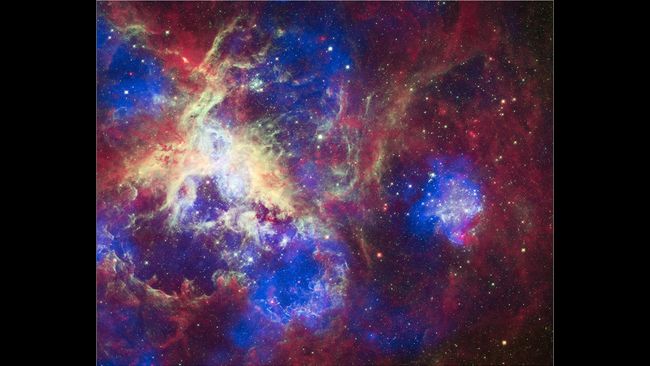Cosmic Record Holders: The 12 Biggest Objects in the Universe [View all]
By Adam Mann a day ago
The universe is a big place, and it's full of big things. Planets, stars, galaxies and clusters of galaxies extend upward on ever-more-massive scales. Here we marvel at some of the record holders in different cosmic categories, perhaps feeling humbled by the universe's ability to produce entities of incredible size and grandeur.
Largest exoplanet: GQ Lupi b

(Image credit: ESO)
Astronomers weren't sure what to make of the mysterious GQ Lupi b when it was first discovered
in 2005. Orbiting a young star around two and a half times farther than Pluto is from the sun, the
companion object seemed to be either a planet or a brown dwarf, which is actually a type of small
star. Subsequent observations have yet to clear up the confusion, but the best estimates suggest
GQ Lupi b has a radius around 3.5 times that of Jupiter, meaning that if it is an exoplanet, it's the
largest ever found.
Largest star: UY Scuti

(Image credit: Philip Park/CC by SA 3.0)
UY Scuti is a hypergiant star with a radius that's around 1,700 times larger than the sun, making
it the biggest known star in the universe. If someone were to place UY Scuti at the center of the
solar system, its edge would extend just beyond the orbit of Jupiter. Gas and dust streaming from
the star would extend even farther out, beyond the orbit of Pluto, or around 400 times the
Earth-sun distance.
Largest Nebula: The Tarantula Nebula

(Image credit: X-ray: NASA/CXC/PSU/L.Townsley et al.; Optical: NASA/STScI;
Infrared: NASA/JPL/PSU/L.Townsley et al.)
Both the largest known nebula and most active star-forming region in our local galactic
neighborhood, the Tarantula Nebula stretches for more than 1,800 light-years at its longest
span. Also known as 30 Doradus, the object is located 170,000 light-years from Earth in the Large
Magellanic Cloud, a small satellite galaxy that orbits our Milky Way. Rather than a killer arachnid,
this Tarantula is a stellar nursery — within its beautiful folds of gas and dust young stars are being
born.
More:
https://www.space.com/largest-objects-in-universe.html


